Name Saint Pishoy | Role Saint | |
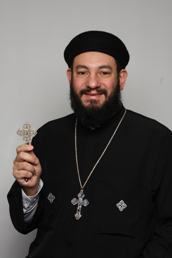 | ||
Venerated in Eastern Orthodox ChurchesOriental Orthodox Churches Died July 15, 417 AD, Antinopolis People also search for Paul of Tammah, Philemon the actor, Saint Moura, Murad Bey Major shrine Monastery of Saint Pishoy, Wadi El Natrun | ||
St pishoy coptic orthodox church
Saint Pishoy (Coptic: Ⲁⲃⲃⲁ Ⲡⲓϣⲱⲓ Abba Pišoi; and Greek: Όσιος Παΐσιος ο Μέγας; 320 – 417 AD), known in the Coptic Orthodox Church of Alexandria as the Star of the Desert and the Beloved of our Good Savior, is an Egyptian desert father. He is said to have seen Jesus and that his body is preserved to the present day in incorruptibility at the Monastery of Saint Pishoy at the Nitrian Desert, Egypt. He is venerated by the Oriental Orthodox Churches and the Eastern Orthodox Churches, and is known in the latter under the Greek version of his name, Paisios.
Contents
- St pishoy coptic orthodox church
- Life
- Departure and Relics
- Monasteries named after Saint Pishoy
- References

St pishoy coptic orthodox church
Life

Saint Pishoy was born in 320 AD in the village of Shansa (Shensha or Shesna), currently in the Egyptian governorate of Al Minufiyah. Younger to six other brothers, he was weak and frail. His mother saw an angel in a vision asking her to give God one of her children, and pointed at Pishoy. When the mother tried to offer one of her stronger children, the angel insisted that Pishoy was the chosen one.
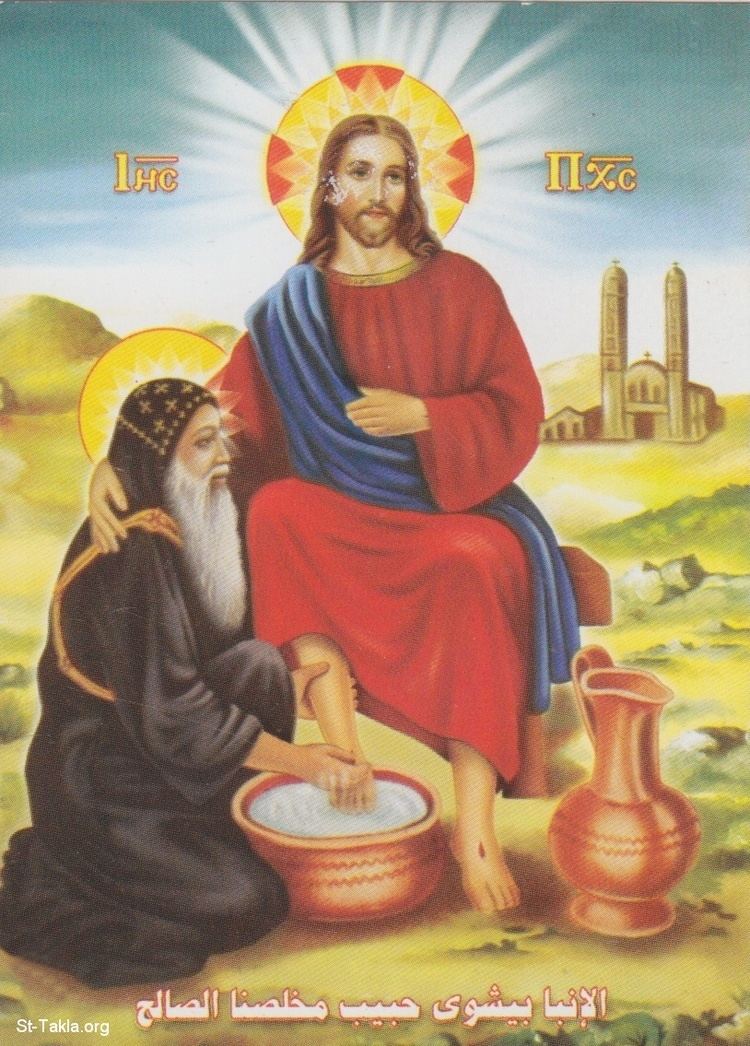
At the age of twenty, Pishoy went to the wilderness of Scetes and became a monk by the hand of Saint Pambo, who also ordained Saint John the Dwarf a monk. When Saint Pambo died, Pishoy was guided by an angel to the site of the present Monastery of Saint Pishoy, where he lived the life of a hermit. At this time, he became the spiritual father of many monks who gathered around him. He was famous for his love, wisdom, simplicity and kindness, as well as for his extremely ascetic life. He was also known to love seclusion and quietness. Pishoy's asceticism was harsh to the extent of tying his hair and hands with a rope to the ceiling of his cell, in order to resist sleeping during his night prayers. This asceticism made him so famous that he was visited by Saint Ephrem the Syrian.
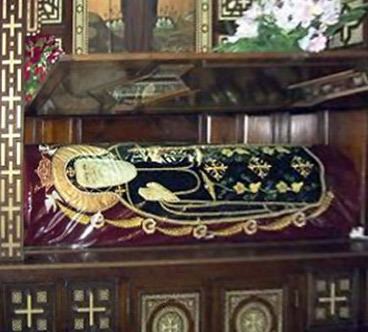
The Copts believe that Pishoy saw Jesus a number of times. Once, an old monk asked him to help him climb a mountain, so Pishoy carried him on his shoulders and climbed, only to discover that the old monk was no one but Jesus. The latter told him that, for the extent of his love, his body will not see corruption. The Copts also believe that Pishoy washed the feet of Jesus who visited him as a poor stranger.
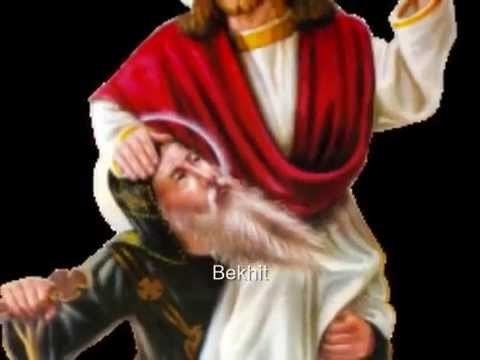
Saint Pishoy was also said to have seen Jesus at his monastery. When Pishoy's brethren learned that Jesus was coming, they gathered so that they might see him. Earlier, there had been an old man that asked these monks to help him on his way but they ignored him. When Saint Pishoy saw the old man, he helped him back to his room. He customarily washed the old mans feet. The old man then appeared to him as Jesus.
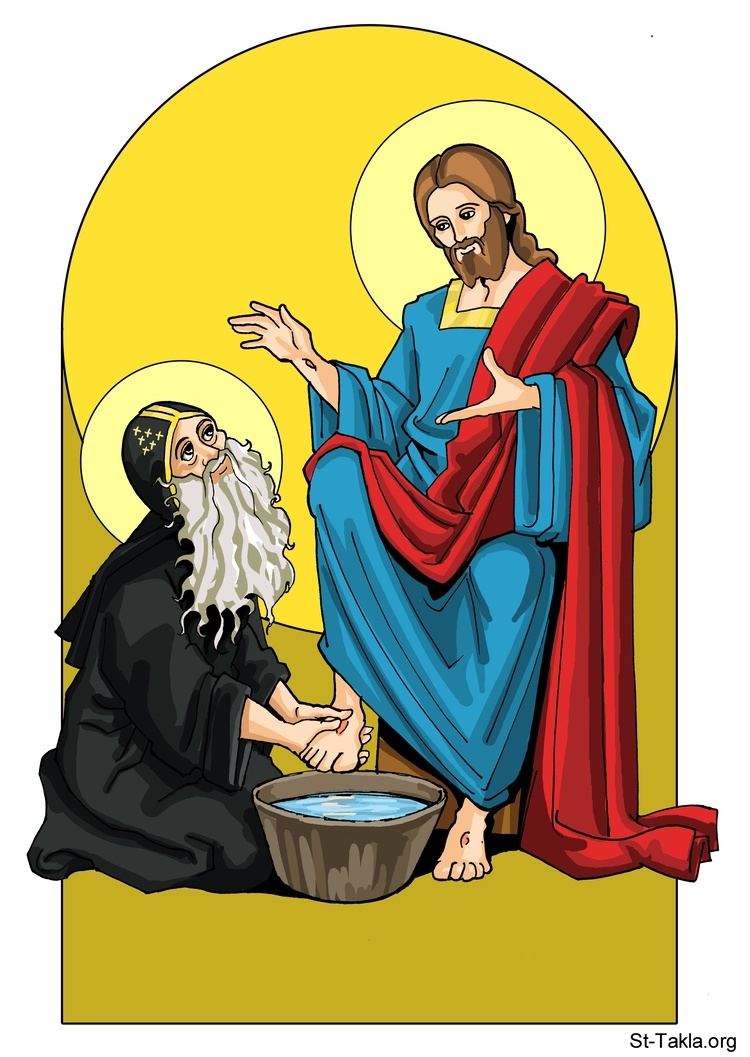
Pishoy is known as a defender of Orthodoxy against heresies. Having heard of an ascetic in the mountain of Ansena who taught that there was no Holy Spirit, Pishoy went to him carrying a weaved basket with three ears. When the old man asked him about the reason for making three ears for a basket, Pishoy replied "I have a Trinity, and everything I do is like the Trinity". After much debate from the Scriptures, the Old and New Testaments, the old ascetic reverted to Orthodoxy.
Saint Pishoy also has the title of "Perfect man"
Departure and Relics
In 407/408 AD, as the Berbers invaded the wilderness of Scetes, Pishoy left and dwelt in the mountain of Ansena. At this time, he met Saint Paul of Tammah in Antinopolis and the two became very close friends. While at the mountain of Ansena, Pishoy built another monastery, the monastery of Saint Pishoy at Dayr al-Barsha, which still stands today near Mallawi. Pishoy departed on 8 Epip (July 15) 417 AD.
On December 13, 841 AD (4 Koiak), Pope Joseph I fulfilled the desire of Saint Pishoy and moved his body (as well as that of Saint Paul of Tammah) to the Monastery of Saint Pishoy in the wilderness of Scetes. It is said that they first attempted to move the body of Saint Pishoy only, but when they carried it to the boat on the Nile, the boat would not move until they brought in the body of Saint Paul of Tammah as well. Today, the two bodies lie in the main church of the Coptic Orthodox Monastery of Saint Pishoy in the Nitrian Desert. Eyewitnesses recount that the body of Saint Pishoy remains in an allegedly incorruptible state to this day.
Monasteries named after Saint Pishoy
There are currently three monasteries in Egypt that carry the name of Saint Pishoy:
